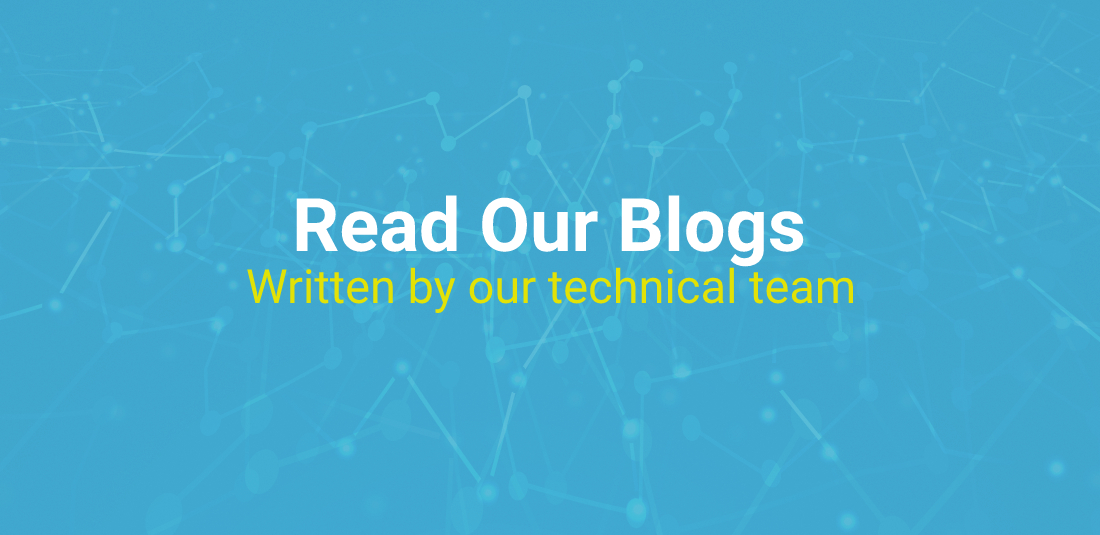Blogs or Expert Columns
Numpy
Numpy NumPy, short for Numerical Python, is a fundamental library in the Python ecosystem for scientific computing. At the heart of NumPy lies the ndarray (n-dimensional array) object, which provides a high-performance multi-dimensional array data structure and tools for working with these arrays. Understanding NumPy arrays is crucial for anyone involved in data analysis, machine learning, and scientific research, as they form the basis for many other data processing libraries and algorithms. In this blog post, we will provide a comprehensive overview of NumPy arrays, covering core concepts, typical usage scenarios, common pitfalls, and best practices. By the end of [...]
Pandas
Pandas Pandas is a powerful open-source Python library for data manipulation and analysis, built on top of NumPy. It provides intuitive data structures—primarily Series (1D) and DataFrame (2D)—that make it easy to clean, transform, and analyze structured data. Key Features of Pandas: DataFrame abstraction: Tabular data with labeled axes (rows and columns) Flexible I/O: Read/write from CSV, Excel, SQL, JSON, Parquet, and more Powerful indexing and slicing: .loc, .iloc, boolean masks, multi-indexing GroupBy operations: Aggregation, transformation, and filtering Time series support: Resampling, rolling windows, datetime indexing Missing data handling: .fillna(), .dropna(), interpolation [...]
PowerBI
PowerBI Power BI is Microsoft’s cloud-based business intelligence platform that enables users to visualize, analyze, and share data across teams and systems. It’s designed for both technical and non-technical users, offering drag-and-drop dashboards, real-time analytics, and deep integration with Microsoft 365, Azure, and external data sources. Key Features of PowerBI: Interactive dashboards: Build rich, responsive visuals with slicers, filters, and drill-throughs. Data modeling: Use Power Query and DAX (Data Analysis Expressions) for transformations and calculations. Real-time data streaming: Connect to live data sources for up-to-date insights. Natural language Q&A: Ask questions in [...]
AWS Transform
AWS Transform: The Data Engineer’s Secret Weapon for Cloud ETL Ditch the Mess. Unleash the Data. Let’s be real. Data is the new oil, but right now, your digital oil field is a swamp. Every organization is drowning in raw data—streaming in from sensors, APIs, CRMs, and web apps. The problem? That data is a hot mess: inconsistent, fragmented, and definitely not ready for prime-time dashboards or ML models. Before you can drive real value, you must clean, standardize, and transform it. This is where most projects stall. Enter AWS Transform, the powerful, serverless ETL engine powered by [...]
Open AI’s Gpt Models
Open AI's Gpt Models GPT (Generative Pre-trained Transformer) models are large language models developed by OpenAI. They are based on the Transformer architecture, which enables them to understand and generate human-like text by learning patterns from vast amounts of data. Key Characteristics of Open AI's Gpt Models: Autoregressive generation: Predicts the next token in a sequence, enabling coherent text generation. Pretrained + fine-tunable: Trained on diverse corpora, then adapted to specific tasks via prompts or fine-tuning. Few-shot and zero-shot learning: Can perform tasks with minimal examples or instructions. Multimodal capabilities (in newer [...]
XGBoost
XGBoost XGBoost (eXtreme Gradient Boosting) is a distributed, open-source machine learning library that uses gradient boosted decision trees, a supervised learning boosting algorithm that makes use of gradient descent. It is known for its speed, efficiency and ability to scale well with large datasets. XGBoost, or eXtreme Gradient Boosting, is a XGBoost algorithm in machine learning algorithm under ensemble learning. It is trendy for supervised learning tasks, such as regression and classification. XGBoost builds a predictive model by combining the predictions of multiple individual models, often decision trees, in an iterative manner. The algorithm works by sequentially adding [...]
Snowflake
Snowflake Snowflake is a cloud-based data platform built for scalability, performance, and ease of use. It follows a unique multi-cluster shared data architecture that separates storage, compute, and services layers, making it highly efficient for data warehousing, analytics, and data sharing. Components of Snowflake: Storage LayerStores structured and semi-structured data (JSON, Avro, Parquet, etc.).Uses a columnar format optimized for compression and performance.Fully managed and auto-scalable across cloud platforms (AWS, Azure, GCP).Compute Layer (Virtual Warehouses)Uses virtual warehouses (clusters of compute resources) to execute queries.Multiple warehouses can run independently without affecting others (supports concurrency).Auto-scaling and auto-suspend features help optimize cost and performance.Cloud Services LayerManages metadata, security, query optimization, and transactions.Provides [...]
K-Means
How K-Means Works: The Science Behind Smart Grouping Imagine walking into a massive supermarket. Every day, thousands of customers shop, picking up products that suit their preferences, habits, and lifestyles. As a data analyst, your challenge is to group these customers into meaningful segments — perhaps “bargain hunters,” “premium buyers,” or “impulse shoppers.” How do you do this when you have no labels, no predefined categories, and only raw data? That’s where K-Means Clustering — one of the most intuitive and powerful algorithms in unsupervised machine learning — comes into play. In this deep dive, we’ll explore what [...]
ThirdEye Data Recognized Again in Newsweek & Statista’s America’s Most Reliable Companies 2026
ThirdEye Data Recognized Again in Newsweek & Statista’s America’s Most Reliable Companies 2026 Sunnyvale, CA - 23rd October 2025: We are proud to announce that ThirdEye Data has been recognized in Newsweek and Statista’s America’s Most Reliable Companies 2026 list, marking our second consecutive year on this prestigious ranking. This year, we are honored to stand at #131 among 300 companies nationwide, with a reliability score of 80.88 out of 100, standing out from over 33 million businesses across the U.S. This recognition reflects our unwavering commitment to delivering reliable, innovative, and high-impact AI and data [...]
Graph Neural Networks
Graph Neural Networks Graph Neural Networks (GNNs) extend traditional neural networks to operate on graph data, where: Nodes represent entities (e.g., users, proteins, documents) Edges represent relationships or interactions (e.g., friendships, chemical bonds, hyperlinks) Unlike CNNs or RNNs that work on grid-like data (images, sequences), GNNs use message passing to aggregate information from neighboring nodes, enabling context-aware learning. Key Components: Node features: Attributes of each node (e.g., age, type, embedding) Edge features: Relationship metadata (e.g., weight, type) Graph structure: Connectivity pattern used to propagate information Graph Neural Networks are special types of neural networks capable of working with [...]
PLC Integration For Line Control
PLC Integration For Line Control Overview Programmable Logic Controllers (PLCs) are industrial digital computers designed for real-time control of manufacturing processes. Integrating PLCs into line control systems enables automated coordination of machinery, sensors, actuators, and human interfaces across production lines. This integration ensures: Real-time synchronization of equipment Modular control of subsystems (e.g., conveyors, robots, packaging units) Data acquisition for analytics and diagnostics Safety interlocks and fault handling Scalability for expanding or reconfiguring production lines Components of PLC Integration For Line Control: PLCs come in many shapes and sizes, from a small device [...]
PyTorch on AWS
PyTorch on AWS: Unleashing Deep Learning Innovation at Hyperscale The Perfect Blend of Code and Cloud In the wild, wonderful world of deep learning, PyTorch isn't just a framework; it's practically a culture. It’s the flexible, intuitive best friend of every researcher, the backbone of a winning Kaggle notebook, and a trusted component in enterprise-grade AI systems. PyTorch earned its stripes through sheer ease of use, a Pythonic feel, and a community that's second to none. But here’s the reality check: your laptop or that trusty on-prem GPU rack just can't keep up anymore. Modern deep learning models—think [...]
MetaGPT
MetaGPT: The Future of AI Collaboration and Autonomous Software Development MetaGPT is an innovative open-source framework that blends human procedural knowledge with the power of AI agents driven by large language models (LLMs) to build software the way real companies do. Think of it as a virtual software company, where every role — from the product manager to the architect and engineer — is played by an intelligent AI agent working in harmony. (IBM once described it as an AI software company in action.) Developed by DeepWisdom, the brainchild of Chenglin Wu, MetaGPT is rooted in cutting-edge research [...]
Amazon Bedrock
Amazon Bedrock: The Next Frontier in Generative AI for Businesses In today’s rapidly evolving tech landscape, businesses are racing to leverage artificial intelligence not just as a tool, but as a strategic partner. Imagine a world where companies can access powerful AI models without managing the underlying infrastructure—where innovation is limited only by imagination, not technical constraints. This is exactly what Amazon Bedrock promises: a revolutionary platform that democratizes access to foundation models and enables organizations of all sizes to build sophisticated AI-powered applications with unprecedented ease. Amazon Bedrock isn’t just another cloud service—it’s a paradigm shift. With [...]
Azure Synapse Analytics
Azure Synapse Analytics: The Future of Unified Data Intelligence Now a day’s digital world, data has become the lifeblood of every organization. It fuels smarter decisions, sparks innovation, and powers automation across industries. However, while collecting data has become easier than ever, the real challenge lies in making sense of it all. Businesses now gather information from a wide range of sources — ERP systems, IoT devices, web platforms, and customer interaction tools — but connecting these dots to generate meaningful insights is where the true test begins. That’s where Azure Synapse Analytics makes a difference. Azure Synapse [...]
Azure Databricks
Azure Databricks: Unifying Data, AI, and Analytics for the Intelligent Enterprise In our data-filled world today, companies have too much data but not enough useful information. The problem isn't getting data anymore—it's about bringing it together working with it, and turning it into knowledge you can use. This is where Azure Databricks shines. Azure Databricks is a quick simple, and team-friendly Apache Spark-based analytics tool made just for Microsoft Azure. Microsoft and Databricks worked together to create it bringing big data work, machine learning, and data study into one place. It works with Python, R, [...]
Edge AI Deployment
Edge AI Deployment Edge AI refers to deploying artificial intelligence models directly on edge devices—such as smartphones, drones, cameras, sensors, or embedded systems—rather than relying on centralized cloud servers. This paradigm shift enables real-time decision-making, low-latency inference, and offline intelligence, all while reducing bandwidth and preserving data privacy. Core Components of Edge AI Deployment: Model Optimization: AI models must be compressed, quantized, or pruned to run efficiently on resource-constrained devices. Tools like TensorFlow Lite, ONNX Runtime, and PyTorch Mobile are commonly used. Hardware Acceleration: Edge devices often leverage specialized chips—like GPUs, TPUs, [...]
Pinecone (Vector Search)
Pinecone (Vector Search) Pinecone is a fully managed, cloud-native vector database built specifically for high-dimensional similarity search. It’s designed to store and query vector embeddings—dense numerical representations of data generated by models like BERT, CLIP, OpenAI, or custom transformers.Unlike traditional databases that rely on exact matches or keyword search, Pinecone enables approximate nearest neighbor (ANN) search, which finds items that are semantically similar based on vector proximity. This is critical for modern AI applications where meaning matters more than syntax. Architechtural Foundations & Workflow: Vector Indexing Engine Uses Hierarchical Navigable Small World [...]
Azure AI Services
Azure AI Services: The Engine of Intelligent Enterprise Innovation In the fast-evolving landscape of artificial intelligence, every organization faces the same challenge — how to move from AI experimentation to real-world impact. Microsoft’s Azure AI Services (previously part of Azure Cognitive Services) is designed exactly for that purpose. It unifies all of Microsoft’s pre-built and customizable AI offerings under one powerful umbrella, giving teams the tools to build intelligent, responsible, and scalable AI solutions — without starting from scratch. From recognizing speech and translating languages to deploying enterprise-scale generative AI applications, Azure AI Services brings together the best [...]
MoodleAPI
MoodleAPI Moodle offers a rich set of modular APIs designed to extend, customize, and integrate its open-source learning platform. These APIs cover everything from user access control to analytics, making Moodle highly adaptable for LMS developers and plugin architects. Core Moodle API's: Access API (access): Manages user permissions and capabilities. It determines what actions a user can perform and allows plugins to define new capabilities. Data Manipulation API (dml): Abstracts database operations. It provides safe, consistent methods for reading and writing to Moodle’s database, supporting multiple DB engines. File API (files): Handles [...]
GDAL
GDAL: Unlocking the Power of Geospatial Data Imagine trying to read a map, but the map comes in dozens of formats — TIFFs, GeoJSON, Shapefiles, NetCDF, and more. You need a translator, someone who can understand each format and help you extract meaningful insights. That translator is GDAL, or the Geospatial Data Abstraction Library — the silent workhorse powering geospatial analytics across industries. Whether it’s tracking climate change, analyzing urban growth, or powering GPS applications, GDAL ensures that geospatial data is accessible, usable, and interoperable. In this article, we’ll explore GDAL in depth: what it is, how it [...]
Vertex AI Agent Builder
Vertex AI Agent Builder: The Gateway to Agentic AI in Google Cloud You’re chatting with your new virtual assistant: “Book me a flight to Paris next month, with a hotel near the Eiffel Tower.” To your surprise, it does exactly that — checking flights, comparing hotels, even sending you an email with confirmation. Not a standard chatbot, but a smart agent — an AI system that takes actions, chains tasks, and grounds itself in real data. That’s the promise of Agentic AI — systems that do more than just reply: they reason, plan, interact, and act. To make [...]
Hugging Face on AWS
Hugging Face ∩ AWS: The Ultimate AI Power-Up From Laptop Experiment to Global Production Let’s face it: Hugging Face didn't just democratize AI; they handed out the keys to the future to everyone with a GitHub account. Today, the platform is the definitive hub for everything cool in AI—from classic NLP transformers to the massive Large Language Models (LLMs) and the latest multimodal breakthroughs. It’s where models go to become famous. But here’s the cold reality check: your local GPU—even the beefy one you spent half your salary on—can't handle the scale of a production LLM fine-tuning job [...]
Amazon S3
Stop Worrying About Data Storage: How Amazon S3 Powers Modern Business and Saves You Money Let's face it: The hype cycle is real. Everyone's chasing the shiny new toy—Generative AI models, real-time data pipelines, and low-latency systems. We all celebrate the "brains" of the cloud, that massive computing power. But here’s the crucial, often-ignored truth: none of that cutting-edge innovation happens if you don't have a secure, infinitely scalable, and utterly trustworthy place to put the files. The real workhorse, the foundational service that silently keeps the entire digital economy running, is Amazon Simple Storage Service (Amazon S3). [...]





